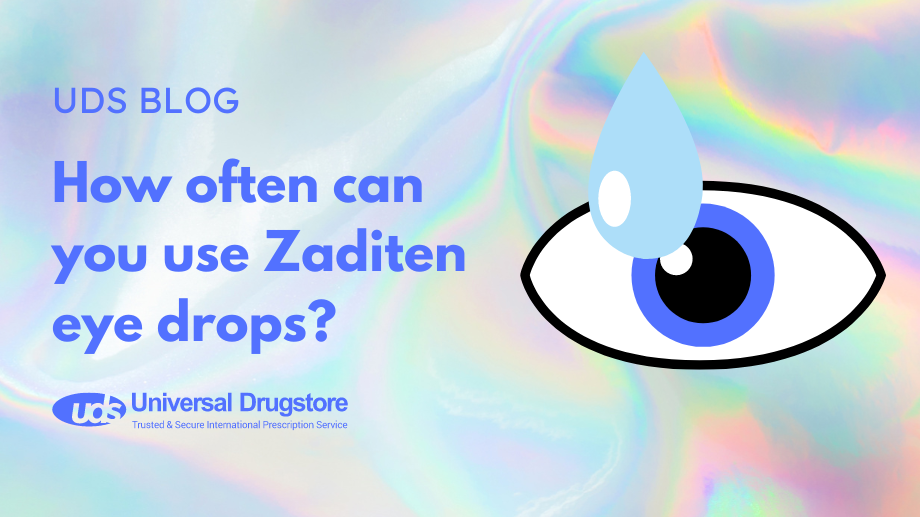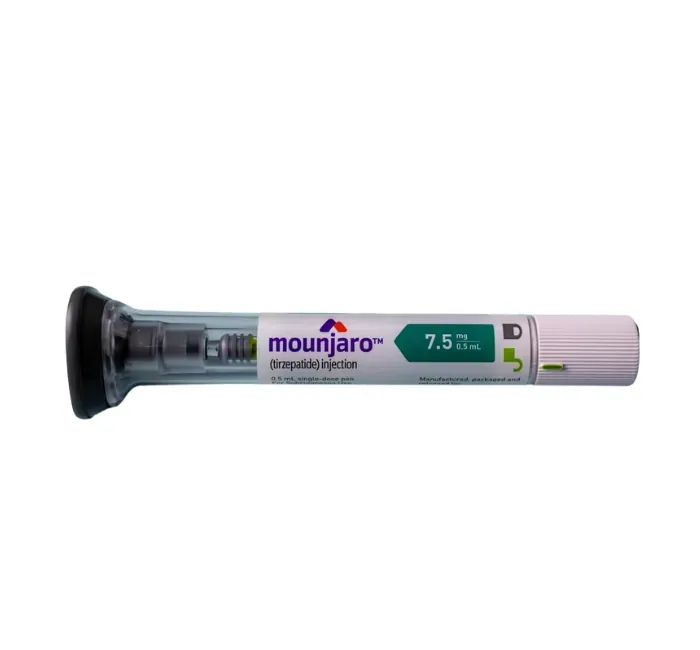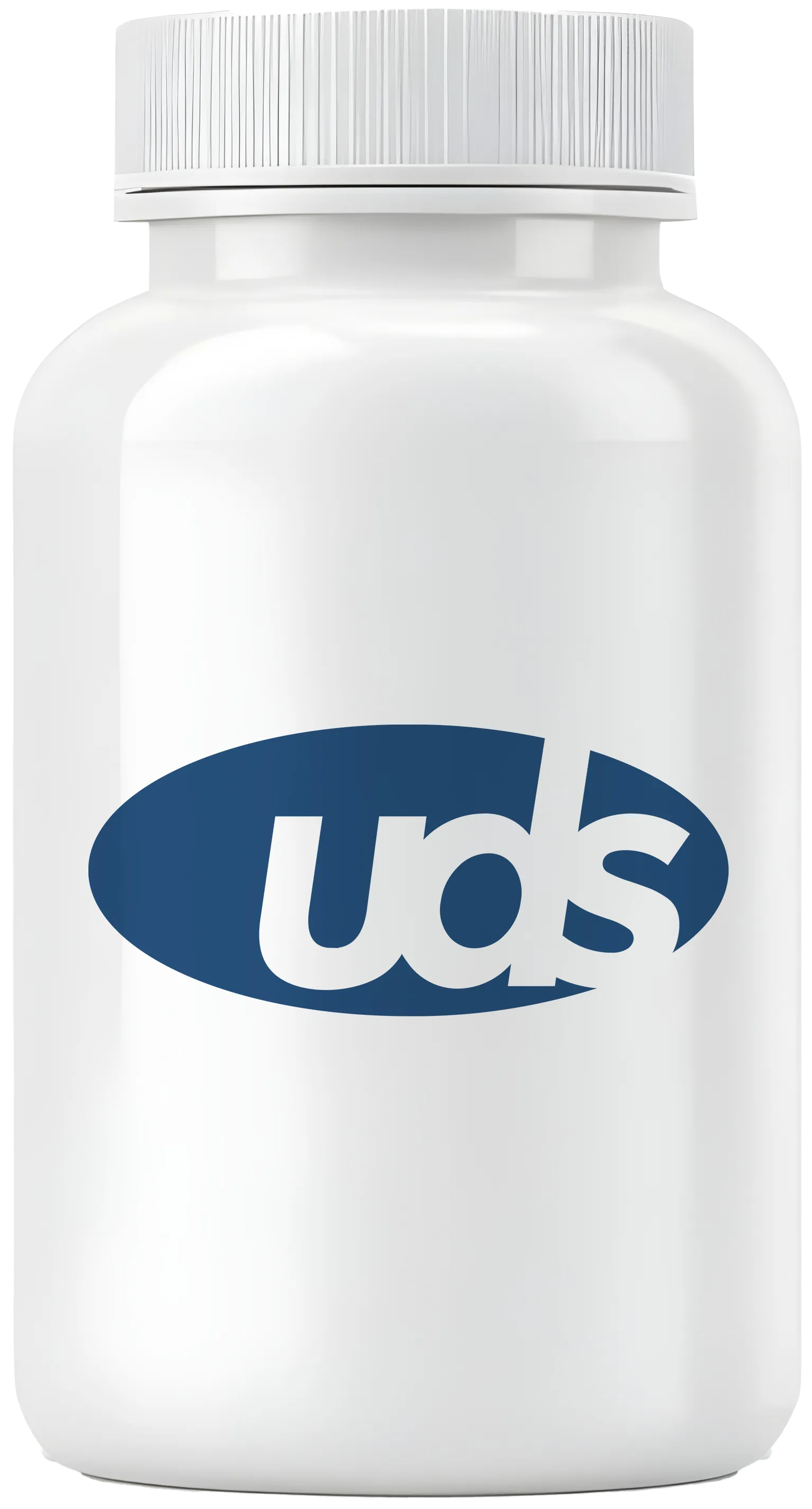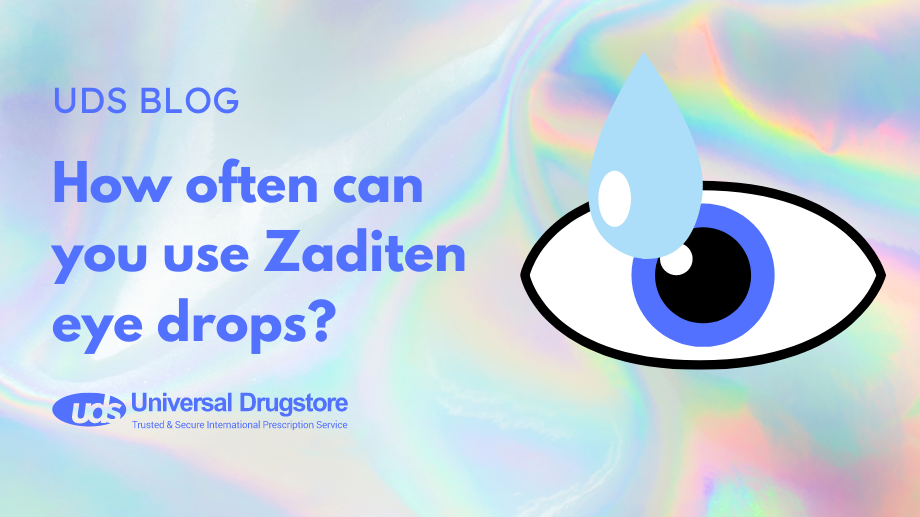How often can you use Zaditen eye drops?

Zaditen eye drops (ketotifen) are a brand-name ophthalmic solution that is used to relieve symptoms from seasonal allergic conjunctivitis such as itchy, watery eyes. The most common airborne allergens that cause allergic conjunctivitis are pollen, grass pollen, pet dander, dust, and mold. Zaditen eye drops work by blocking the release of histamine and as a mast cell stabilizer, both of which decrease the amount of substances in your body that contribute to allergic symptoms.
Zaditen eye drops should be applied twice a day. Before applying, wash your hands thoroughly. To avoid contamination, do not touch the dropper tip or let it touch your eye or any other surface. At each application, one drop of Zaditen should be applied to the conjunctival sac (the space between the lower eyelid and eyeball that fills with tears) in the affected eye(s). If you have questions about the correct use or dose of Zaditen, speak to your healthcare provider.
Keep reading as we go into more detail about Zaditen eye drops and answer some frequently asked questions.
Zaditen eye drops FAQs
What conditions are Zaditen eye drops typically prescribed for?
Zaditen eye drops contain the active ingredient ketotifen fumarate. It is an antihistamine and mast cell stabilizer that is used for the short-term treatment of seasonal allergic conjunctivitis in adults and children 3 years of age or older.
What were the side effects when using Zaditen eye drops?
The most common side effects of Zaditen eye drops seen in clinical trials include:
- Eye irritation
- Eye pain
Other possible side effects of Zaditen eye drops include:
- Dry mouth
- Dry eyes
- Eyelid disorder
- Stuffy/runny nose
- Headache
- Blurred vision
- Eczema
Rarely, Zaditen eye drops may cause serious side effects such as:
- Serious, life-threatening allergic reactions, including anaphylaxis.
Symptoms of anaphylaxis may include urticaria (raised red patches on your skin or hives), swelling of your face, lips, tongue, or throat, and shortness of breath. Seek immediate medical attention if you experience any symptoms of a serious allergic reaction.
Damage to soft contact lenses
Zaditen eye drops should not be used to treat eye irritation caused by wearing contact lenses. It contains benzalkonium chloride as a preservative that soft contact lenses can absorb. If you wear soft contact lenses, remove them before you use Zaditen eye drops. You should wait at least 10 minutes after you use the eye drops to wear your contacts again.
Impairment when driving or using machines
During the first few days of treatment with Zaditen eye drops, your reactions may be impaired, and therefore, you should exercise care when driving a vehicle or operating machinery.
Disclaimer: These are not all the possible adverse reactions of Zaditen eye drops. You should always seek medical advice from a healthcare professional for any questions or concerns about your medical condition or treatment. You should also read all the patient information, including your Medication Guide that comes with Zaditen. You can report side effects to the FDA at 1-800-FDA-1088 or www.fda.gov/medwatch.
How do Zaditen eye drops work?
The active substance in Zaditen eye drops is ketotifen fumarate, which is a histamine H1-receptor antagonist and a mast cell stabilizer. Blocking this receptor and stabilizing mast cells help to decrease ocular (eye) allergy symptoms by reducing your body’s response to allergens (substances that cause allergic reactions). This can help treat symptoms such as itchy, watery, or swollen eyes.
What precautions should be taken when using Zaditen eye drops?
You should not take this medication if you have had a hypersensitivity reaction to ketotifen fumarate or any of the inactive ingredients in the formulation. Zaditen multi-dose eye drops contain 0.25 mg/mL of ketotifen fumarate and inactive ingredients such as benzalkonium chloride (preservative), glycerol, and sodium hydroxide. Zaditen single-dose units do not contain a preservative. See the package insert for all the inactive ingredients of the Zaditen product you are prescribed to be sure you are not allergic to it.
Shop Medications
You should be sure your healthcare provider is aware of all your medical conditions as they may be contraindications or you may need increased monitoring during treatment, including:
- Pregnant or plan on becoming pregnant
- Breastfeeding or plan to breastfeed
While there is no human data available, animal studies showed that ketotifen is found in breast milk. However, because topical use of Zaditen eye drops will not likely cause detectable amounts of ketotifen in breast milk, it can be used while breastfeeding.
Are there any drug interactions with Zaditen eye drops?
When Zaditen eye drops are taken with other prescription drugs, over-the-counter medications, vitamins, herbal products, and supplements, it may change how they work or increase the risk of side effects. There are no interactions listed for Zaditen eye drops when it is used at the recommended dose. However, you should still be sure your healthcare provider is aware of all your current medications.
Can you overdose on Zaditen eye drops?
It is unlikely that you will experience symptoms or side effects if you accidentally swallow Zaditen eye drops and no case of overdose has been reported. Oral ingestion of the contents of a multiple-dose container (5 ml bottle) would be equivalent to 1.25 mg of ketotifen which is 60% of the recommended oral daily dose for a 3-year-old child. Clinical results have shown no serious signs or symptoms after oral ingestion of up to 20 mg of ketotifen.
Also, do not be concerned if more than one drop is accidentally dropped into your eye.
Do Zaditen eye drops cause dry eyes?
Although uncommon, some people using Zaditen eye drops experience dry eyes. In one clinical trial containing patients using ketotifen 0.25%, dry eyes occurred in 15 out of 330 (4.5%) in the active group, compared to 7 out of 165 (4.2%) in the placebo group. The difference in these groups is not very significant.
How do you take Zaditen eye drops?
You should use this medication as directed by your healthcare provider. One drop of Zaditen is typically taken twice daily. It is a clear, colorless to faintly yellow solution. If it appears discolored or there are particles in it, do not use it.
To apply Zaditen eye drops:
- Wash your hands.
- Tilt your head back.
- Pull down your lower eyelid with your finger and hold the bottle upside down over the eye with your other hand.
- Instill one drop into your eye without touching your eye/eyelid with the dropper tip. Do not touch the dropper tip or let it touch any other surface to help avoid contamination.
- Close your eye and press the tip of your finger against the inner corner of the eye for 1 to 2 minutes.
- Repeat these steps to treat the other eye if needed.
- Put the cap back on the bottle immediately after using it.
Store your bottle of Zaditen eye drops according to the folding box and keep it out of the reach of children.
Can Zaditen eye drops cause problems?
Many people using Zaditen eye drops do not experience serious side effects. The most common side effects include eye irritation and eye pain. Some uncommon side effects include light sensitivity, eyelid disorder, headache, eczema/rash, blurred vision, and dry eyes.
Tell your healthcare provider immediately if you have any side effects that are bothersome or do not go away, including eye pain, dry eyes, increased swelling/redness of your eye, or vision problems. A very serious allergic reaction to Zaditen eye drops is rare.
Related Medications
- Zaditor Eye Drops (ketotifen)
- Pataday Eye Drops (olopatadine)
- Patanol Eye Drops (olopatadine)
- Lastacaft Eye Drops (alcaftadine)




